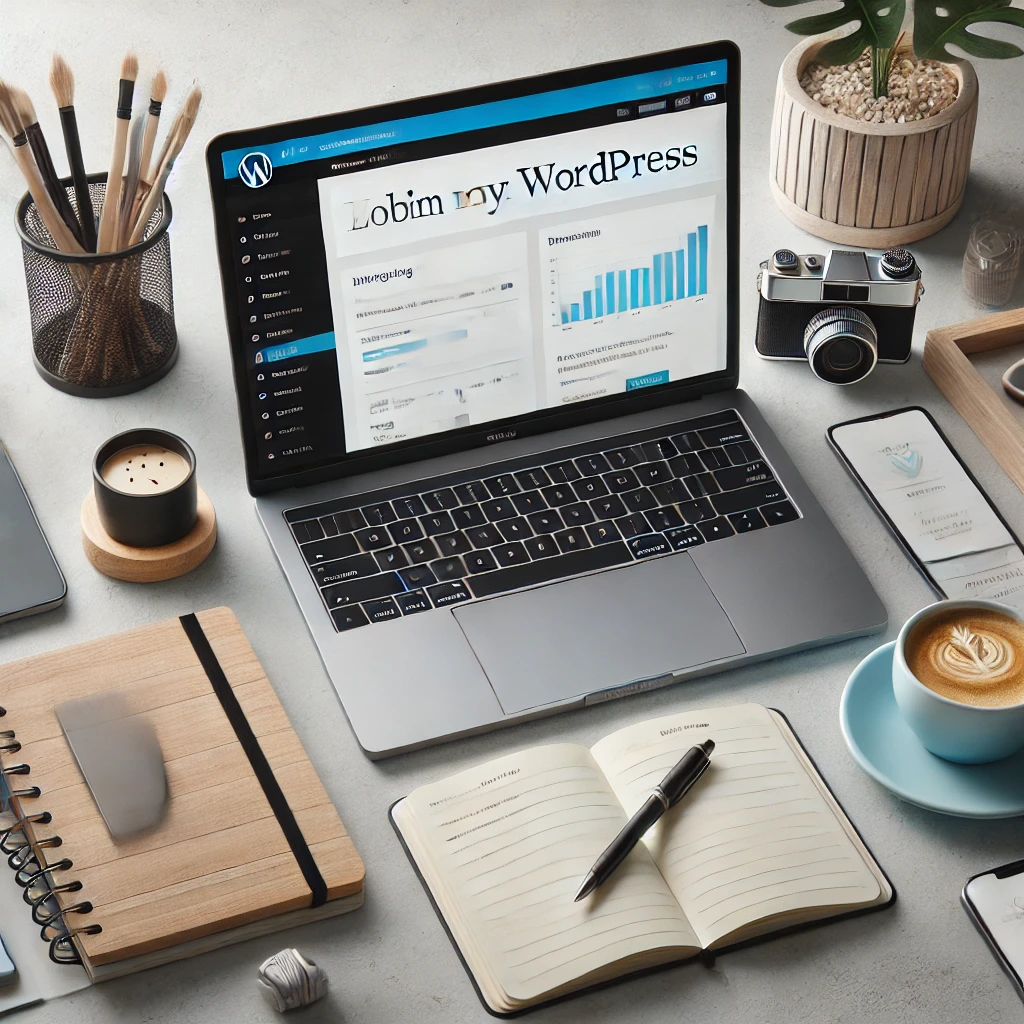How to Start a WordPress Blog in 2024: A Step-by-Step Guide for Beginners

1. Why Choose WordPress for Blogging?
Before we dive into the steps, let’s understand why WordPress is the best choice:
- Easy to Use: No coding skills are required.
- Flexible: Thousands of themes and plugins for customization.
- SEO-Friendly: Helps improve search rankings.
- Scalable: Works for personal blogs or large business websites.
There are two versions: WordPress.com (hosted) and WordPress.org (self-hosted). We’ll focus on WordPress.org because it gives you full control and better monetization options.
2. Choose a Domain Name & Hosting
A domain is your blog’s address (e.g., www.yourblog.com), and hosting is where your blog’s files are stored.
Choosing a Domain Name
Pick a domain that is:
- Short and easy to remember.
- Related to your niche.
- Free of numbers and special characters.
- Available with a .com extension (if possible).
Use domain name generators like Namecheap or GoDaddy if you need ideas.
Selecting a Hosting Provider
Reliable hosting ensures your blog loads fast and stays online. Recommended providers:
- Bluehost (Beginner-friendly, offers free domain)
- SiteGround (Great performance and customer support)
- Hostinger (Affordable pricing with good speed)
After purchasing hosting, install WordPress with a one-click installer.
3. Install WordPress in One Click
Most hosting providers have a simple WordPress installation process:
- Log into your hosting dashboard.
- Find the “One-Click WordPress Install” option.
- Choose your domain and click install.
- Set up a username and password.
- Log in to your new blog at
yourdomain.com/wp-admin.
4. Pick & Customize a Theme
Your blog’s design depends on the theme you choose. Free and premium themes are available in the WordPress theme directory and marketplaces like ThemeForest.
How to Install a Theme:
- Go to Appearance > Themes in your WordPress dashboard.
- Click Add New and browse themes.
- Install and activate a theme you like.
- Customize it under Appearance > Customize.
5. Install Essential Plugins
Plugins add functionality to your blog. Here are must-have plugins:
- Yoast SEO – Optimizes your blog for search engines.
- Jetpack – Improves security and performance.
- WP Super Cache – Boosts site speed.
- Akismet – Blocks spam comments.
- Contact Form 7 – Adds a contact form.
To install plugins:
- Go to Plugins > Add New in your dashboard.
- Search for the plugin.
- Click Install Now and then Activate.
6. Write Your First Blog Post
Now it’s time to create content!
How to Write a Post:
- Go to Posts > Add New.
- Enter a catchy title.
- Write your content in the editor.
- Add images and format text.
- Click Publish when ready.
Tips for a Great Blog Post:
- Write in a conversational tone.
- Use headings, bullet points, and images.
- Solve a problem or provide value.
- Add a call-to-action (CTA) at the end.
7. Optimize for SEO & Performance
To get more traffic, optimize your blog for search engines:
- Use Yoast SEO to optimize title and meta descriptions.
- Write high-quality, keyword-rich content.
- Improve speed with caching plugins and image optimization.
- Get backlinks from other websites.
8. Promote & Monetize Your Blog
Once your blog is live, it’s time to get readers and make money.
Promotion Tips:
- Share posts on social media.
- Join blogging communities.
- Use email marketing to engage readers.
Monetization Methods:
- Ads (Google AdSense) – Earn from displaying ads.
- Affiliate Marketing – Promote products and earn commissions.
- Sponsored Posts – Get paid to write about brands.
- Sell Your Own Products – eBooks, courses, or services.
1. What is WordPress?
WordPress is a popular content management system (CMS) that allows you to create and manage websites, including blogs, with ease. It comes in two versions:
- WordPress.com (hosted) – A managed platform with limited customization options.
- WordPress.org (self-hosted) – A fully customizable version that requires web hosting.
2. How do I start a blog on WordPress?
- Choose between WordPress.com or WordPress.org.
- Purchase a domain name and web hosting (if using WordPress.org).
- Install WordPress.
- Select a theme for your blog.
- Install essential plugins.
- Create and publish blog posts.
3. Do I need coding skills to use WordPress?
No, you don’t need coding skills. WordPress provides a user-friendly interface with a block editor for writing posts, drag-and-drop page builders, and a variety of themes and plugins to customize your blog.
4. How do I choose a theme for my blog?
- Go to Appearance > Themes in your WordPress dashboard.
- Choose from free or premium themes.
- Consider a responsive design for mobile users.
- Ensure SEO optimization and fast loading speed.
- Check for customization options.
5. What plugins should I install for a blog?
- Yoast SEO (for search engine optimization)
- Jetpack (for security, performance, and stats)
- Akismet (for spam protection)
- WP Super Cache (for speed optimization)
- Elementor (for page design)
- Social Share Buttons (to share posts on social media)
6. How do I write and publish a blog post?
- Go to Posts > Add New.
- Write your content using the WordPress block editor.
- Add images, videos, and headings.
- Optimize for SEO (meta title, description, and keywords).
- Preview and click Publish.



Leave a Reply